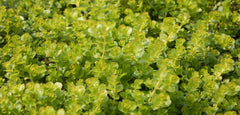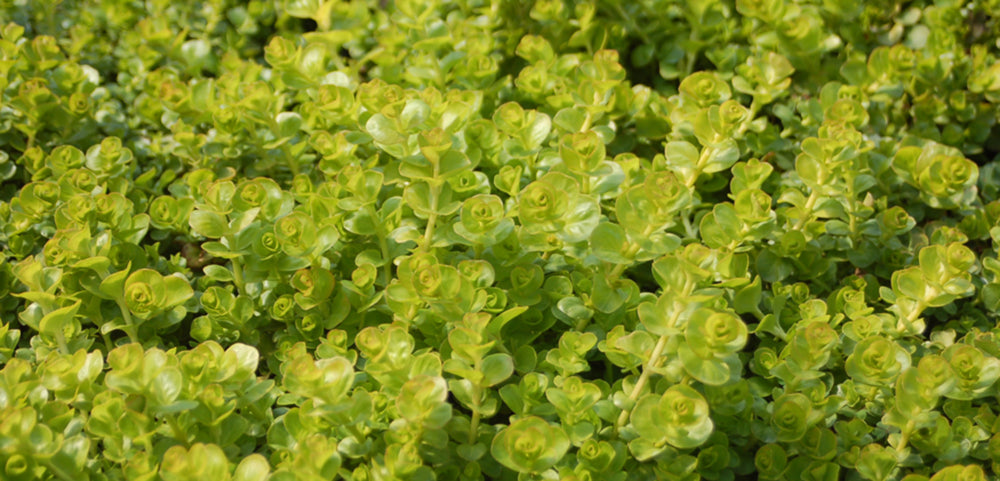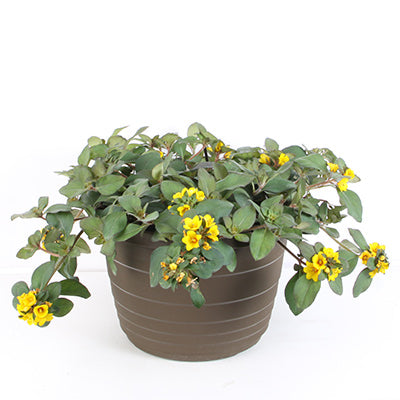Creeping Jenny (Lysimachia nummularia)
Creeping Jenny Plant Features
Creeping Jenny may only grow a few inches tall, but this super hardy perennial packs a big punch of color. Plus, unlike most perennials, creeping Jenny grows almost as well in the far North as it does in the South, producing a welcome mat of bright, gold foliage almost anywhere in the country. Creeping Jenny is a vigorous trailing plant that makes an ideal ground cover in sunny or partially shady locations.
The plant also thrives in containers where its colorful leaves are allowed to tumble over the edge of a pot. In mid-summer, creeping Jenny also develops masses of cup-shaped golden flowers. Creeping Jenny retains its color all winter long and is tough enough to tolerate moderate foot traffic. Hardy from zones 3-11.
Creeping Jenny Questions?
Email us and one of our ground cover experts will get back to you.
Creeping Jenny Growing Instructions
Plant creeping Jenny in a sunny or partially sunny location. The plants prefer a rich, well-drained soil, but will spread almost as easily over poor soil. Creeping Jenny can become invasive, so plant it where you can control it from spreading through the garden. The plants don't mind wet soil and can be grown in boggy spots or at the edge of water gardens.Note: Creeping Jenny has been banned in some municipalities. Check local restrictions before planting it.
Creeping Jenny is not recommended for human or animal consumption.
-
Water
Moist
-
Light
Outside: Part sun
Outside: Sun
-
Colors
Yellow
-
Special Features
Colorful foliage
Groundcover
Super-easy to grow
Complement your Creeping Jenny
CordylineRed-leaved Cordyline underplanted with Creeping Jenny is an eye-popping combination.
Hydrangea
Let Creeping Jenny scramble around the base of Hydrangea as a colorful ground cover.
Catmint
The blue flowers of Catmint and the yellow leaves of Creeping Jenny look amazing planted in the same bed.


